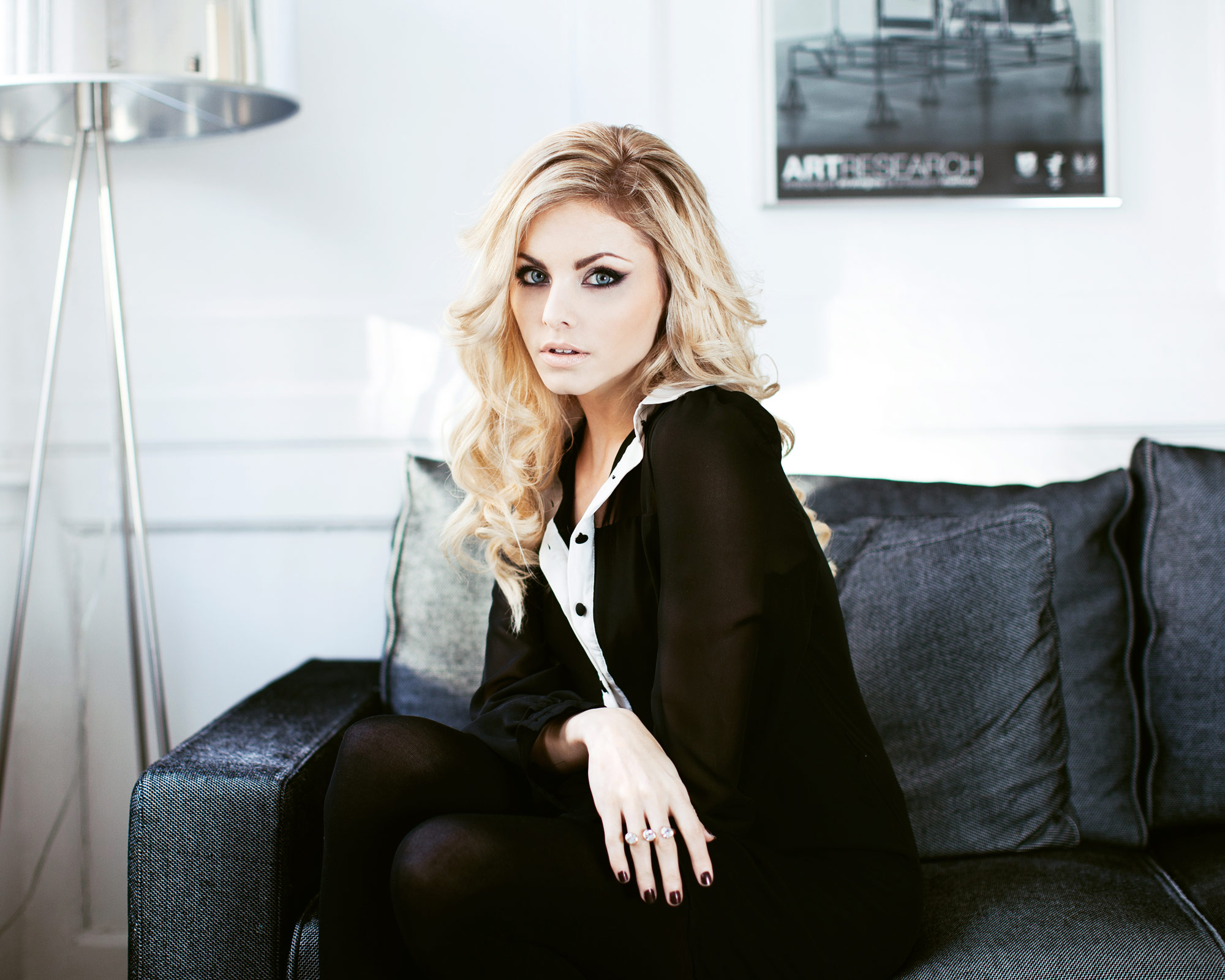
- Interview by Tina Essmaker January 29, 2013
- Photo by Oscar May
Lara Jade
- photographer
Lara Jade is a fashion and editorial photographer who divides her time between the US and Europe for assignments. She grew up in the UK, where she discovered her interest in photography at an early age. She later moved to London to pursue fashion photography full-time before making NYC her home in 2011. Through her business, Lara has had the opportunity to travel the world to share her vision and experiences with an international audience.
Interview
Describe your path to becoming a photographer.
I discovered photography at a very early age—I was 14. Then I came across the online art communities, deviantART and Flickr, which inspired me to try photography. I had always found it frustrating to get my vision across through painting and drawing, so when I discovered how creative photography could be, it pushed me to try it out and explore new concepts.
My first experiments were with self-portraits and were highly inspired by Cindy Sherman and similar artists. I was my own subject for the longest time, which got a little repetitive, so I tried to disguise myself with colorful wigs and different makeup. When I went to college at 17, I continued to do photography and eventually, I reached out to models to expand the subjects in my work. By collaborating with them, I was able to hone and build my skills, which gave me the confidence to think about starting a business.
From there, I moved to London when I was 19 and threw myself into the deep end to pursue photography. I relocated thinking that something would happen straight away because everyone said, “London is going to be great for you!” In reality, things were a little more difficult than I expected! London was great, but every artist I knew already had a huge body of work. Then there was me—a young, fine-art-turned-fashion photographer coming from a local town, trying to make something of myself. I had to redefine myself as a person, business owner, and photographer. Also, before that, I had always done everything—hair, makeup, and styling. My time in London really challenged me and taught me how to collaborate with others, even though it was scary to give up part of my vision.
After London, I moved to New York and have continued to build my career from there.
At what point did you start your own business?
I started it when I was 17. At that time, I was mainly doing local bookings that I had gotten through putting my work online. I had focused on posting my photos on deviantART, Flickr, MySpace, and other community-based websites and started to get a lot of interest, especially because what I was shooting was really creative. That was when I realized photography was no longer a hobby; it made sense to do something with it and start an actual business.
It sounds like you knew from a pretty young age that you wanted to focus on photography. Did you have an “aha” moment along the way when you decided that was what you were going to do?
Kind of. I think that, at first, I just enjoyed it because I was never the kind of kid to go out and party and drink. I was very focused—not really on school, which I used to skip to do photography (laughing)—but on doing something as a creative outlet for myself. When people were out partying on a Friday night, I’d be up late retouching photos or thinking of new concepts I wanted to shoot.
Also, I had this desire to move away from my hometown and explore the world—I knew that photographers were often given this opportunity, especially in fashion photography, and that inspired me to keep pushing myself.
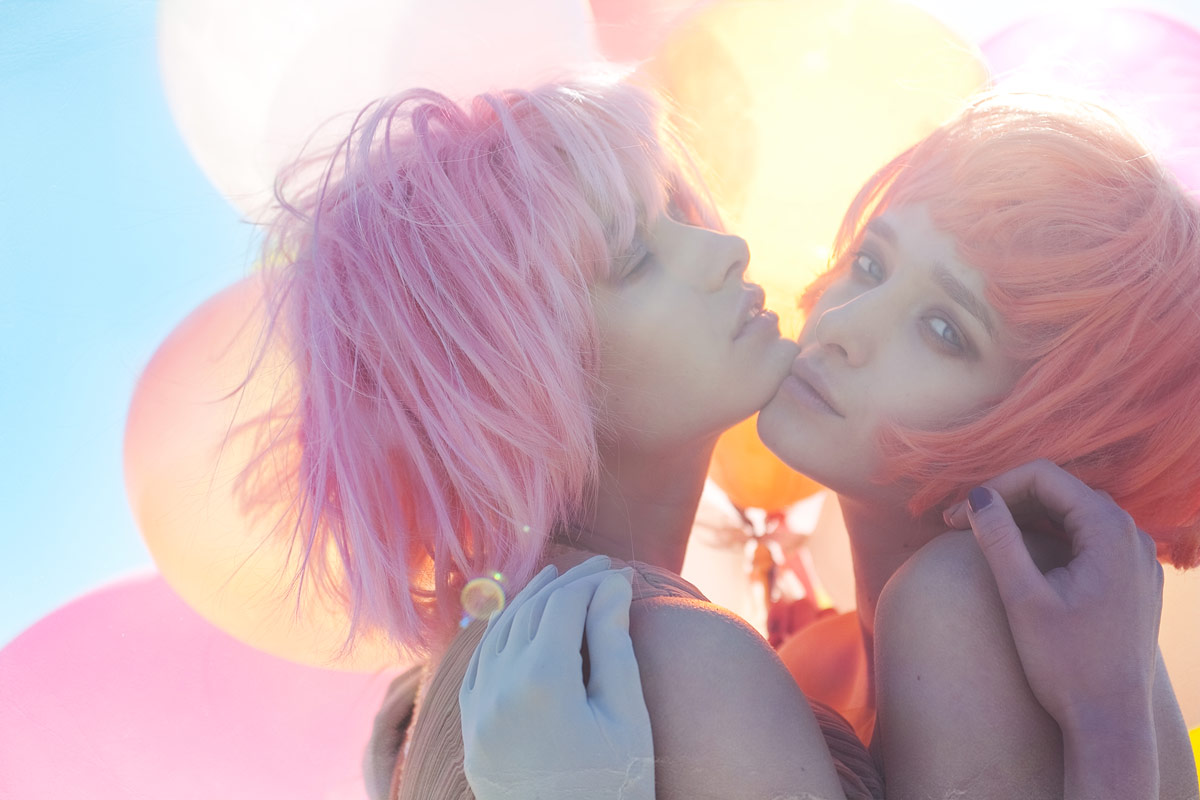
“I had this desire to move away from my hometown and explore the world—I knew that photographers were often given this opportunity, especially in fashion photography, and that inspired me to keep pushing myself.”
Was creativity a part of your childhood?
Yes. My mom and dad were creative and always encouraged me and my sister to be creative. My mom was a makeup artist for Mary Quant and would always tell us how fantastic it was and how much she loved it. My dad was good at drawing and so were my grandparents. My parents have pushed me to follow my dreams and been very helpful, especially at the beginning of my career—my dad even helped me set up my business.
What was it like to start a business at 17?
It was kind of daring at the time. I would never do that now, but then, I was willing to do anything to get out and do something new. Looking back, I think, “Whoa! What was I thinking?” Even when I started approaching the first photo agencies, I wasn’t ready for it, but I do think you learn as you go along, which I did. Actually, at one point, I emailed David Bailey’s studio asking to assist him. I got a stern reply stating, “Thank you, but do you know who I am?” I’ve never forgotten that—and I also never ended up assisting anyone. (laughing)
Have you had any mentors along the way?
Not really—not aside from my parents. I did go to college close to my hometown for two years to study for a diploma in photography. The teachers there were very encouraging and helped me understand my path and where I could place myself in the industry. After that, I went to university for a year before leaving to do my own thing.
I’ve had people who I look up to who have encouraged me to grow and continue to shoot, but they haven’t necessarily been there to guide me in what to do. Those who have had the greatest influence on me are those I surround myself with. They’re all creatives in the industry—hair stylists, makeup artists, and wardrobe stylists—and have been very honest with me and encouraged me to grow.
Honestly, I would say that constructive criticism and letdowns along my journey have really given me the drive to move forward and want to do better.
Have you taken any big risks to move forward?
Yes. I think the first risk was moving to London—I didn’t last long. (laughing) I went there at 19, was very naive, and spent a lot of money on rent. I just went for it, but after about a year, I realized how hard it was to make it in fashion photography at such a young age without any prior experience.
The second risk was when I made the leap and moved to New York. My family and work colleagues told me, “You need to make it in London before you move to New York!”. My reason for moving was to rediscover my passion for photography. When I came here, I fell in love with it and I continued to come back until I finally decided to call it home.
I think it’s important as an artist and business owner to take risks—it’s hard to reap the rewards if you don’t!
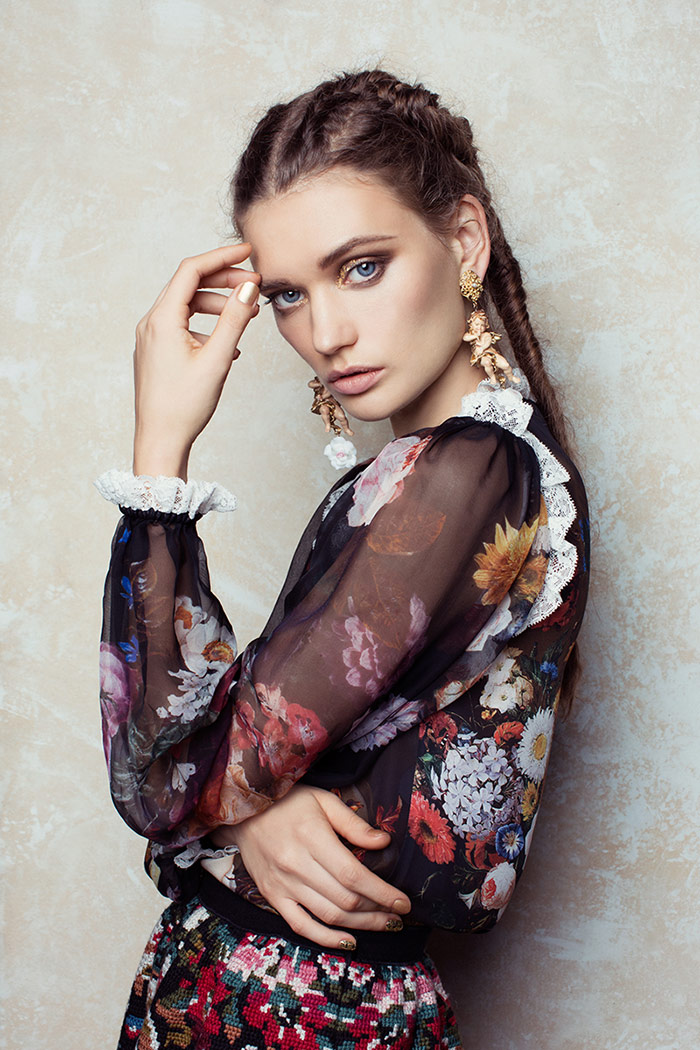
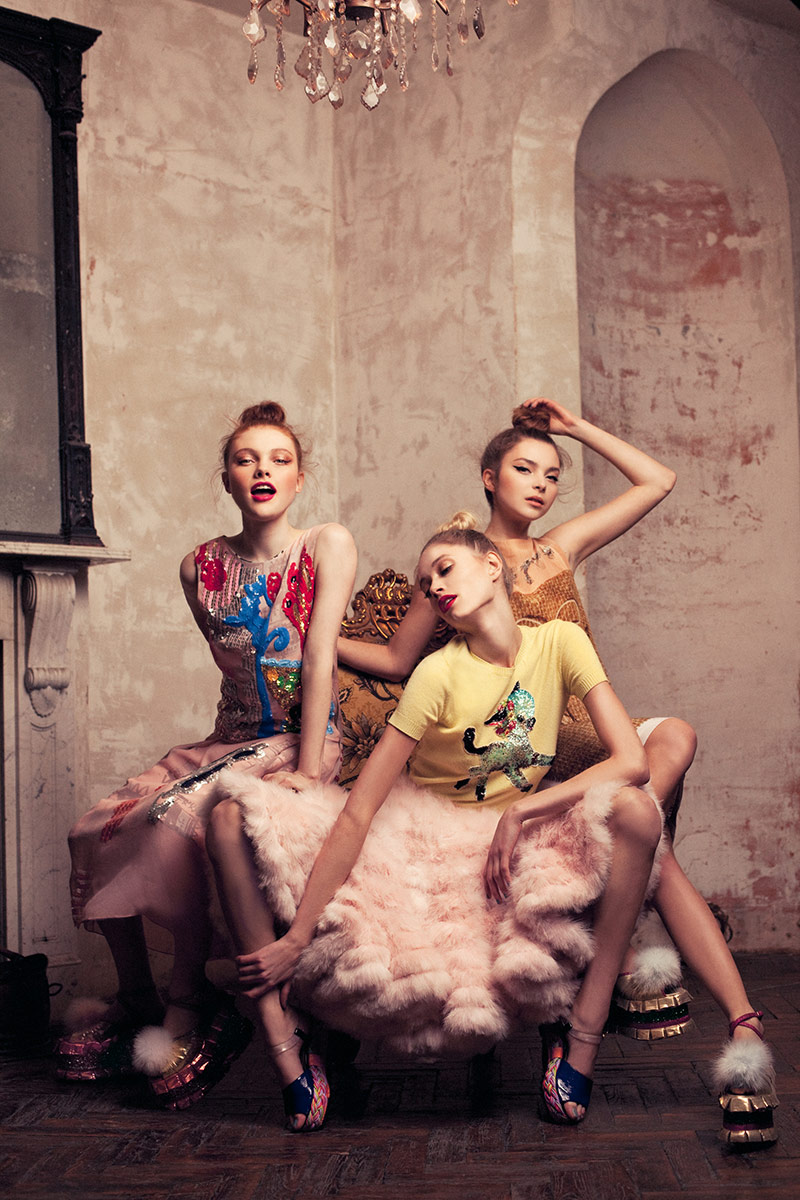
“Try to explore different directions before you decide on a style because as soon as you start showing your work to art directors, agents, and clients, they’re going to remember you for what you sent to them…”
Did you know anyone when you moved to NY?
The first time I came to NY to visit was in February 2010. I knew a few people who lived here or were visiting at the same time as me; it was great experiencing the city with them. Then I returned a couple times during the year to build connections in the industry. I kind of divided my time between NY and London and eventually, I returned to London and worked until I saved enough money to move.
I officially moved to the US in April 2011 and it was difficult at first. I had to rebuild my business again because I didn’t have any contacts here. In order to make myself a part of the industry, I’d find people’s contact information online and then email or call them and ask to set up a shoot—it wasn’t long before I started building a new portfolio.
What do you think was the most challenging part of moving to NY from London?
The visa. (both laughing) Actually, there were quite a few things: being away from my family, who I’m really close to; starting a new business and rebuilding my contacts; starting a new life with a really limited amount of money and making sure I had enough to put back into the business. I was constantly asking myself, “Is this the right thing for me? Have I made a mistake?” or, “Should I just make mistakes and learn from them?” I think there was a lot going on in my head at the time, but, luckily, it all turned out okay.
You’re based in NY, but also travel for work. So, what kind of work are you taking on right now?
I’m doing a lot of different things. When I travel, I try to do workshops and I usually do a couple of those every year. I love taking a step back, teaching others, and watching them learn. I especially enjoy it because I don’t think there’s a lot of help in the fashion industry—people don’t always know what to do or where to turn. Whenever I teach, my goal is to give people the knowledge, creatively and technically, to get started in the industry.
Right now, I’m doing a lot of editorial work, lookbooks, and I’ve started to do more advertorials for clients such as P&G. Ideally, I’d like to be focused on high-end fashion editorials and fashion clients, but it’s nice to break it up a little bit.
Alongside commissioned work, I still do a lot of personal work. It’s what gives clients insight into my vision and if I don’t shoot personal work, I often feel choked creatively.
Dividing my time between London and New York also helps diversify my portfolio. London is more creative in style and the industry has a lot of independent magazines, which is a great playground for fashion photographers. New York is more commercial and more viable for the workshops that I do. I think it’s starting to change over here, though; the creativity from London is slowly seeping over and I hope that continues.
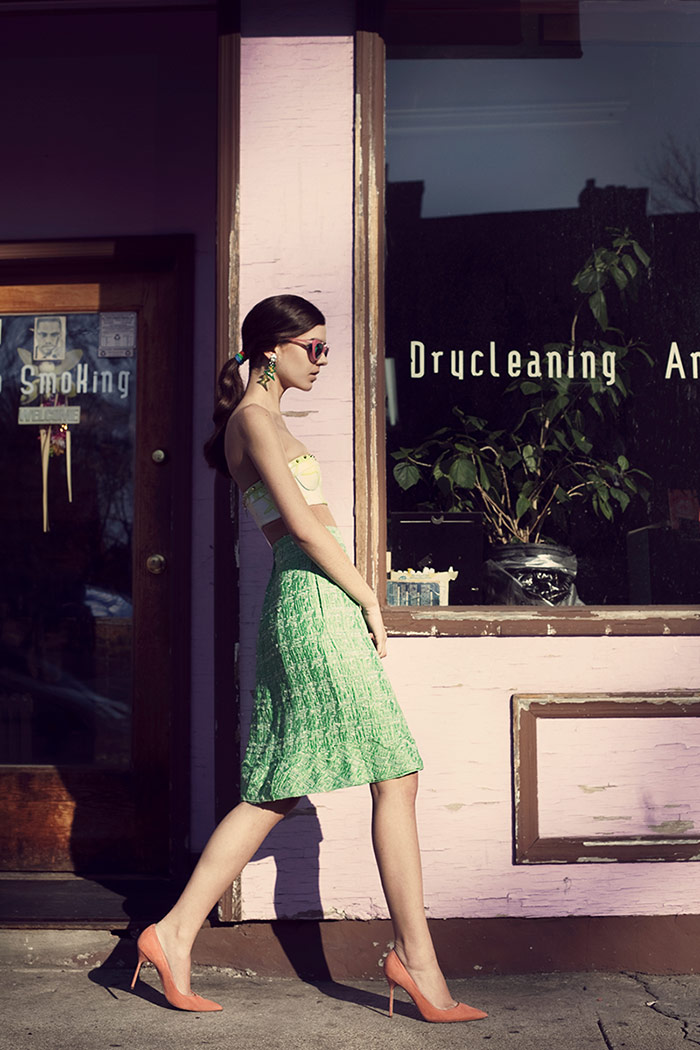
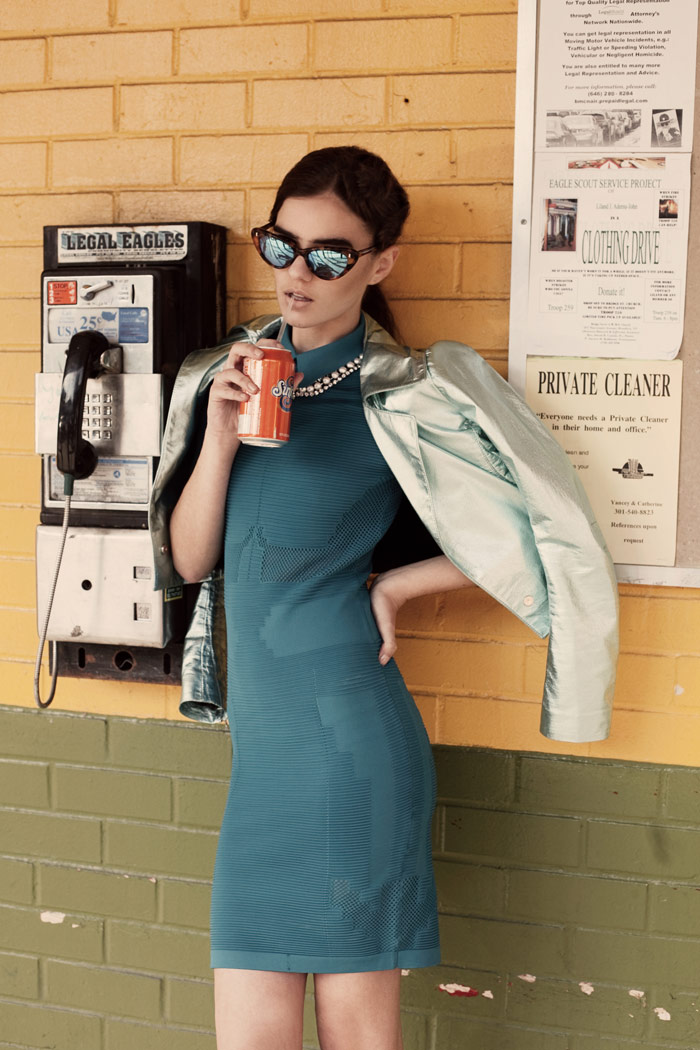
“…I still do a lot of personal work. It’s what gives clients insight into my vision and if I don’t shoot personal work, I often feel choked creatively.”
Are your family and friends supportive of what you do?
Yes. My mom—I joke that she could be my agent—always knows things before I do. I can guarantee that when this interview comes out, she’ll know without me telling her. It’s funny because she’ll call and update me. I am lucky that my friends and family are so supportive of what I do!
Do you feel a responsibility to contribute to something bigger than yourself?
Yes, I do. I think that the fashion industry can be a little self-absorbed sometimes. It kind of takes over—you live, breathe and dream about it and it’s difficult to try and keep personal life and work life separate! I try to take a step back from that and give back whenever I can. I do the workshops and a lot of seminars, which I enjoy because when I’m teaching, I feel a sense of fulfillment. I just finished teaching a 3-day online workshop with creativeLIVE, which was free, and I thought that was great because people who couldn’t afford or attend a workshop could participate. I felt like I’d really given a part of myself through that experience.
Do you have any workshops coming up?
I’m doing a workshop in London in February. It’s a 2-day course at Hasselblad Studio and one day on location, which will be fun. I’m still planning my workshop schedule and am hoping to organize one for NY soon. I’m also planning to focus on a new project over the next two years, so we’ll see. I have a lot of things going on and I haven’t gotten past January yet. (laughing) My main plan for this year is building my portfolio and keeping updated with my clientele in NY.
Awesome. Are you satisfied creatively?
Not all the time. This is why I’m constantly researching what I’d like to do next with personal work. When I do a commercial shoot, it’s all about trying to please the client and often, I’m not allowed to be as creative as I want to be. I do like to oversee the planning, styling, and ideas on a shoot. I even like to have creative control with things like retouching; I spend about half an hour to an hour on each image afterward to make it my own.
I think that a lot of young, inexperienced photographers are choked creatively and it’s important to say no to jobs if they don’t benefit you. One thing I’ve learned this past year is to say no to things and be okay with it. I’ve decided that if it’s not going to benefit me long-term and it’s taking a lot of time away from important projects, then I just have to turn it down.
Is there anything you want to try or explore in the next 5 to 10 years?
I would love to eventually try creative direction, either for film or videos, especially music videos. If I did do that, I think it would be far into the future. My heart is set on photography, but sometimes I do crave the ability to take over the creative direction of it—or the styling!—and not have anything to do with the technical side. When I have stylists on set, sometimes I think, “Wow. I wish we could trade places.” Part of me wants to try new things and I think that’s just part of being a creative person. You’re constantly looking for new ways to improve yourself, personally and creatively. I think this is why I have so much control over my shoots—I really do want to do everything. (laughing)
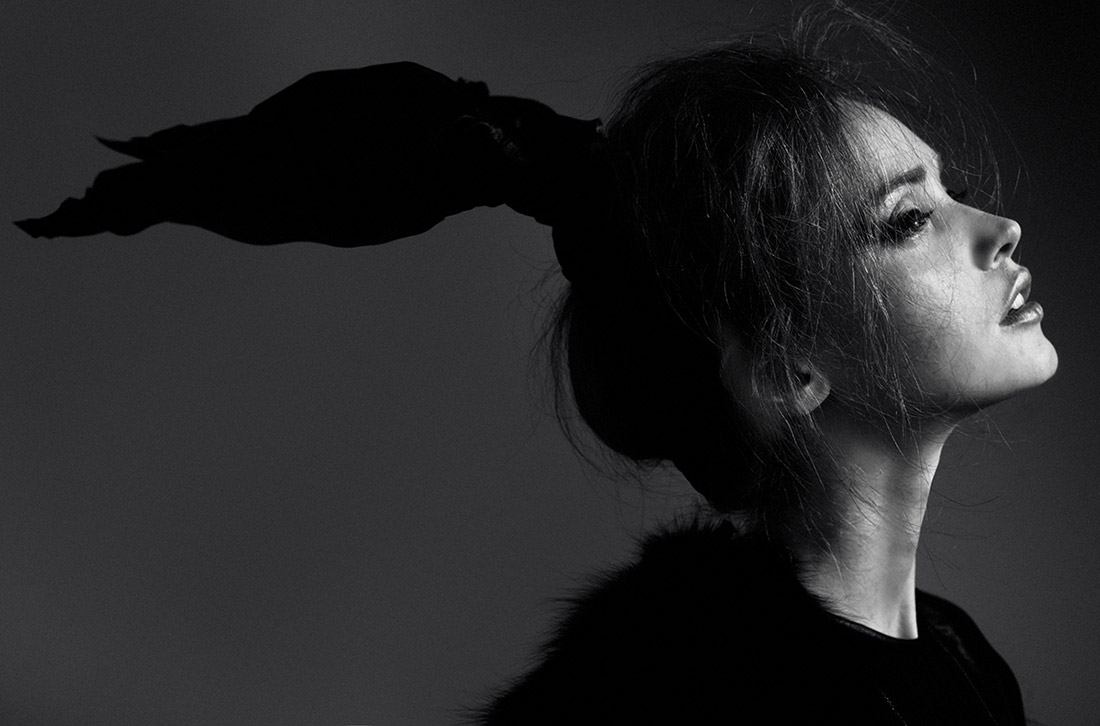
“Part of me wants to try new things and I think that’s just part of being a creative person. You’re constantly looking for new ways to improve yourself, personally and creatively.”
It’s interesting to hear you say that you’d like to head in that direction after hearing you talk about when you first starting shooting and did your own hair, makeup, and styling out of necessity.
It’s hard because people in the industry, especially in fashion, don’t want to see that. When you’re on a fashion shoot, everyone brings something to the table and it’s about the collaboration. I’ve had to learn to give up some of that control and it’s been hard, but it’s for the better!
If you could give advice to another photographer starting out, what would you say?
I would say to experiment as much as possible in the first few years. Try to explore different directions before you decide on a style because as soon as you start showing your work to art directors, agents, and clients, they’re going to remember you for what you sent to them, even if it’s a year down the line.
Also, get as much technical knowledge under your belt as early as possible. It’s good to assist or intern somewhere to get your foot in the door and get a real feel for it. I don’t think education can give you as much insight into the photography and fashion industries as assisting or interning does.
I guess this is a two part question since you split time between New York and London. How does where you live impact your creativity?
New York is very fast-paced and people are constantly moving forward. You’re in and out the door for a meeting quicker than you can pick up the phone. It’s very hard to get your foot in the door, but once you do, it usually becomes a lasting relationship. Also, I am constantly inspired by the people I meet here—everyone is after a dream. Whenever you go out, you meet someone who is in a similar situation to you and I feel like people come together on the basis of that.
London will always be the place I go to for creativity in my work. I also have an agent over there, so I’m always busy when I return! London is big on networking and that can often turn into great connections.
Is it important to you to be part of a creative community of people?
Definitely. As artists, we all struggle and get frustrated, especially when we’re freelancers as well. I just moved to a new area in Brooklyn where most of my creative friends live and it’s nice because we go out for dinner and drinks and chat about the industry or new ideas for shoots. I think it’s so important to be surrounded with people who inspire you.
What does a typical day look like for you?
It always depends on what I’m doing.
On a shoot day, I usually have a super early call time. Once I get to location, I meet with the art director and client and my team and I are briefed on what is expected of us. On set, my assistants set up the lighting and tether it to the computer. Once hair and make up is done, we start with some test shots and hope the client likes what they see on the screen. If not, we keep trying. Once we figure out the lighting and setup, we’ll shoot all of the looks until everyone is happy with what they see. I find it best to go over the shots right after the shoot so we know exactly which ones were successful and which ones the client likes straight away. It’s also important for me to leave a set feeling like I’ve made the client and the team happy. Then, after the shoot, we usually we go for dinner and drinks. That’s one of the great things about New York—getting together after jobs!
On a non-shoot day, I am usually doing admin work. Admin days are full of retouching, emails, managing accounts, planning shoots, researching looks, email correspondence with my creative team, and putting together mood boards. Sometimes I have meetings; other times I’ll go sit in a coffee shop and work just to get out and be inspired to get my never-ending to-do list done! I also spend a lot of time organizing upcoming workshops and events.
Current album on repeat?
Crystal Castles’ album, (III).
Do you have a favorite movie or TV show?
I’ve been watching a lot of ridiculous TV shows to keep me inspired to work at home—Revenge, Family Guy, and American Dad. As for movies, I just went to see The Hobbit and loved it.
Favorite book?
My favorite book is one that really encouraged me to move to New York; it’s The Secret by Rhonda Byrne. I also will admit that I enjoy thriller novels—they often get me through long fights!
Favorite food?
Sushi!
What kind of legacy do you hope to leave?
I want to show people that no matter where they’re from or what age they are, they can succeed in what they want to do. Most people are put off by success because they don’t think they can make it. We all make excuses because we’re scared of what’s on the other side, but it’s important to take risks—even if we fail—because that is how we learn.
It’s easy to say, “Well, I’m from a small town,” or, “I don’t have the money to do that.” I was once in that situation. Even though I feel like I still have quite a long way to go, I hope I can inspire people with my journey so far!
“Most people are put off by success because they don’t think they can make it. We all make excuses because we’re scared of what’s on the other side, but it’s important to take risks—even if we fail—because that is how we learn.”